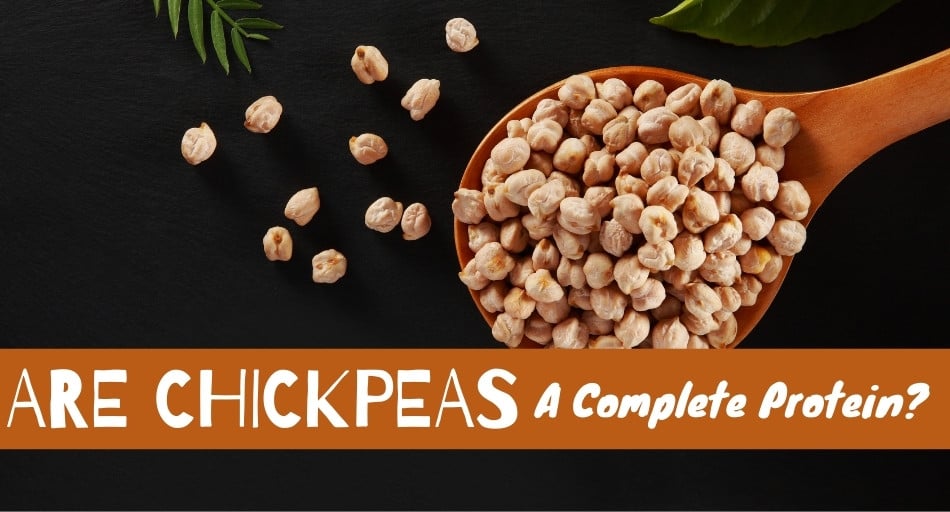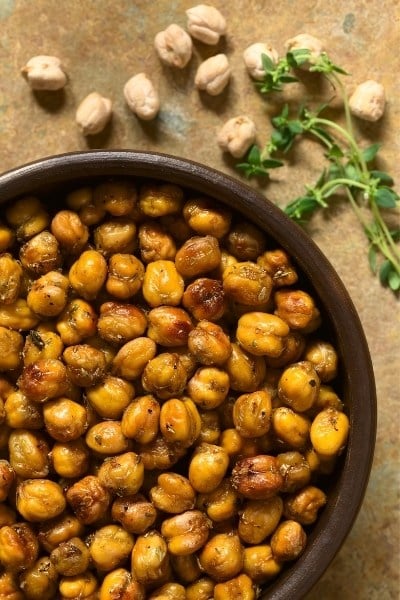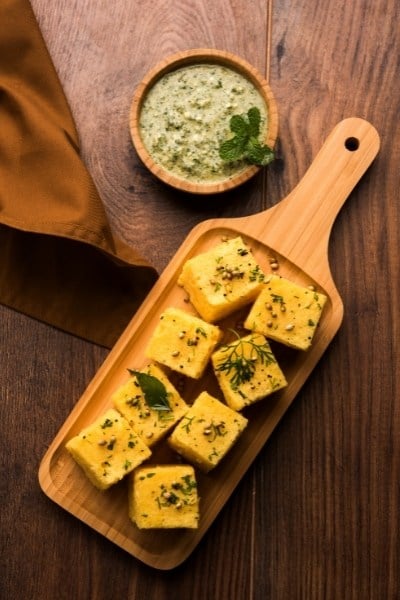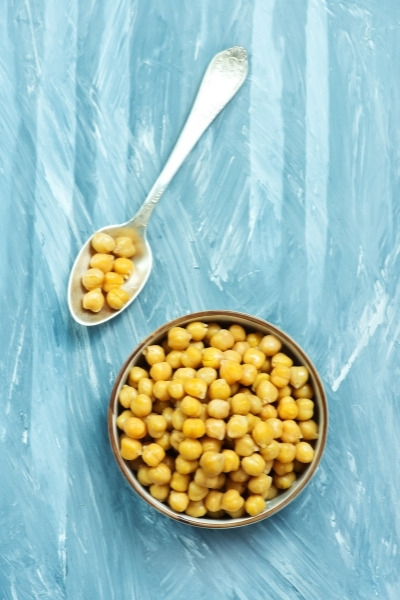Chickpeas are a pulse crop that is high in protein, fiber, and minerals. It is a cool-season crop that is grown in many parts of the world. Chickpeas can be used in a variety of dishes, both savory and sweet.

However, are chickpeas a good source of protein, and are they, in fact, a complete protein?
Table of Contents
- Are chickpeas a complete protein?
- Nutritional Value: Chickpeas, boiled 3.5 oz (100 g)
- How can you get the most out of the protein in chickpeas?
- What are the types of chickpeas?
- Which type of chickpea is best for you?
- What are the benefits of eating chickpeas?
- What are the side effects of eating chickpeas?
- Conclusion
Are chickpeas a complete protein?
Chickpeas aren't a complete protein. They don't contain all of the essential amino acids that the body needs to function properly and are particularly lacking in sulfur-rich amino acids.
Chickpeas are also a good source of fiber and minerals, making them nutritious and filling food. Whether you eat them as a snack or add them to a meal, chickpeas are a great way to boost your protein intake.

However, chickpeas are still an excellent source of protein for those who are trying to build muscle or lose weight. They are also a good source of fiber and minerals, making them nutritious and filling food.
Whether you eat them as a snack or add them to a meal, chickpeas are a great way to boost your protein intake. Mix them with sulfur-rich foods to get all the essential amino acids.
Plant-based sources of sulfur are oats, pearl barley, wheat, and flour made from these grains, as well as soybeans, black, kidney, and white beans, and split peas.
Nutritional Value: Chickpeas, boiled 3.5 oz (100 g)
- 164 Calories
- Total Fat 2.6 g 4% DV
- Saturated fat 0.3 g 1% DV
- Cholesterol 0 mg 0% DV
- Sodium 7 mg 0% DV
- Potassium 291 mg 8% DV
- Total Carbohydrate 27 g 9% DV
- Dietary fiber 8 g 32% DV
- Sugar 4.8 g
- Protein 9 g 18% DV
- Vitamin C 2% DV
- Calcium 4% DV
- Iron 16% DV
- Vitamin D 0% DV
- Vitamin B6 5% DV
- Vitamin B12 0% DV
- Magnesium 12% DV
How can you get the most out of the protein in chickpeas?
There are a few ways that you can get the most out of the protein in chickpeas. You can eat them as a snack or add them to a meal.
You can also cook them in different ways to change up the flavor and texture. One way to make sure that you are getting the most protein from chickpeas is to use them in a recipe that calls for soaked or cooked beans.
This will help to release the amino acids and make them more available for your body to use. You can also sprout your chickpeas to increase their protein content.
Sprouting beans increases the number of enzymes and vitamins, making them more easily absorbed by the body.
What are the types of chickpeas?
There are a variety of different types of chickpeas available on the market. They come in a variety of shapes, sizes, and colors.
They also have different flavors that range from nutty to creamy. No matter which type of chickpea you choose, you can be sure to benefit from its nutritional value. Here are a few of the most common types:
• Kabuli chickpeas are the most popular type of chickpea. They are large and round with light-colored skin.
• Desi chickpeas are smaller and darker than Kabuli chickpeas. They have a nutty flavor and are often used in Indian cuisine.
• Chana Dal is made from split chickpeas. They are small and have a mild, nutty flavor.
• Garbanzo beans are made from mature chickpeas. They are large and have a creamy texture and a nutty flavor.
• Gram flour is made from ground chickpeas. It is a popular ingredient in Indian cuisine.
RELATED: Is Rice A Complete Protein? (Quick Facts)
Which type of chickpea is best for you?
The type of chickpea that is best for you depends on your personal preferences. If you are looking for a chickpea that is high in protein and has a nutty flavor, then you may want to choose a Kabuli chickpea.
If you are looking for a chickpea that is small and has a mild flavor, then you may want to choose a chana dal.
If you are looking for a chickpea that is large and has a creamy texture, then you may want to choose a garbanzo bean.
The type of chickpea that you choose should also be based on the dish that you are making. If you are making a curry, then you may want to choose a Chana Dal Dhokla.
If you are making a soup or stew, then you may want to choose a garbanzo bean.

No matter which type of chickpea you choose, you are sure to get nutritious and delicious food.
Chickpeas are a great way to add protein to your diet and are a versatile ingredient that can be used in a variety of dishes. Try them today and see how they can benefit your health.
What are the benefits of eating chickpeas?
Chickpeas are a nutritious food that offers a variety of health benefits. They are high in protein and fiber, which can help to regulate digestion.
Chickpeas are also a good source of vitamins and minerals, including iron, folate, and magnesium. Additionally, they contain antioxidants that can help to protect the body against disease.
Chickpeas are a healthy and versatile food that can be enjoyed in a variety of dishes. They're an excellent choice for those who are looking for a nutritious and filling snack or meal.
What are the side effects of eating chickpeas?
There are a few potential side effects of eating chickpeas. Chickpeas are high in fiber, which can cause gas and bloat.
Additionally, they contain a high level of lectins, which can cause stomach cramps and diarrhea. It is important to drink plenty of water when eating chickpeas, as they can also cause dehydration.

If you experience any of these side effects after eating chickpeas, then stop eating them and consult a doctor.
Chickpeas are a healthy and nutritious food, but they may not be right for everyone. Be sure to assess your tolerances before incorporating them into your diet.
Conclusion
In conclusion, whether you eat them as a snack or add them to a meal, chickpeas are a great way to boost your protein intake.
Although there is a lot of contradicting information out there, chickpeas aren't complete proteins, meaning they don't contain all of the nine essential amino acids that the body needs. They are missing methionine.
Chickpeas are however a good source of fiber and minerals, making them nutritious and filling food.
Sources: Food Chemistry, USDA
